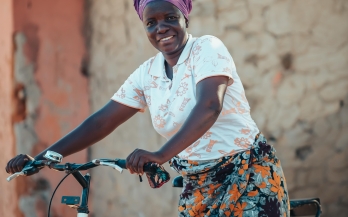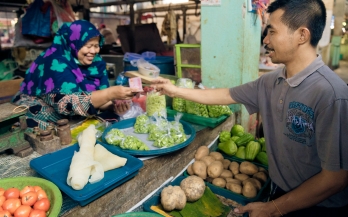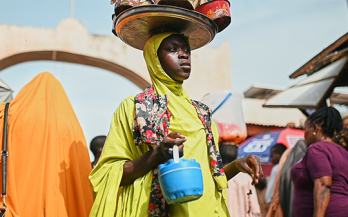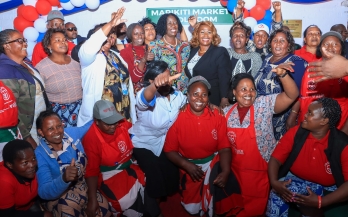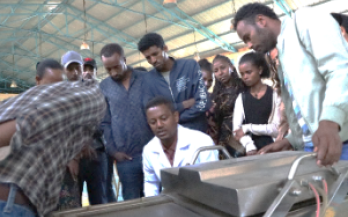Previously, we showed how NutriBaik is changing lives through this story. Today, we talk to Ancha Monequete on why she “finds hope in NutriBaik”. Here we see how, through women the NutriBaik, women are playing their part in the functioning of food systems.
As the world marks International Women’s Day 2025, we celebrate the resilience, ingenuity, and contribution of women in driving economic growth and improving household nutrition. In Kenya, one of the most visible yet often overlooked players in this space is the mama mboga (the last-mile vegetable vendor) who ensures families have access to fresh and affordable produce daily.
This video showcases GAIN’s collaboration with Buguruni Market (Dar es Salaam, Tanzania). It illustrates the early testing of the Food Systems Governance model; highlighting the importance of i) knowing the local food system, ii) One Nutrition (nutrition, food hygiene and safety, reduced food waste), and iii) engaging multiple stakeholders to co-design and support infrastructure investments that enhance vendor livelihoods, as well as improve the quality, safety, and value of food stored, upcycled, and sold to consumers.
A recent high-level event co-hosted by the Center for Indonesian Policy Studies (CIPS) and the Global Alliance for Improved Nutrition (GAIN) brought together key stakeholders at Oakwood Suites Kuningan in Jakarta on December 10, 2024. This strategic discussion, which fostered collaboration among government, academia, and industry experts, aimed to contribute to addressing Indonesia's pressing food security and nutrition challenges.
The intersection of climate change and food security took center stage at the recent Nigeria Climate Change Forum, where experts gathered to discuss sustainable solutions for ensuring food and nutrition security amidst growing climate challenges.
Malnutrition and climate change are two of the most pressing challenges facing humanity today – and they are intrinsically connected. While food systems contribute to land degradation and roughly one-third of anthropogenic greenhouse gas emissions, climate change in turn jeopardizes the nutrient quality of staple crops.
On 15th January 2025, the bustling town of Machakos in the lower eastern part of Kenya witnessed a transformative milestone in food systems in Kenya; the commissioning of the Marikiti Market Cool Room. This state-of-the-art facility was officially handed over by the Global Alliance for Improved Nutrition (GAIN) to the County Government of Machakos in an event graced by H.E. Governor Wavinya Ndeti and GAIN Kenya Country Director, Ms. Ruth Okowa.
Human capital is the bedrock on which companies build their success. In Ethiopia's food-processing industry, the capacity and skill of its workforce and entrepreneurs determine the trajectory of the sector. GAIN Ethiopia works to cultivate conditions conducive to private sector growth, from farm to point of sale – by supporting the development of a capable workforce.
Neural Tube Defects (NTDs) occur when the neural tube doesn't close properly during the first month of a mother’s pregnancy. This can result in a range of physical and cognitive disabilities, often requiring extensive medical care, including surgeries, ongoing treatments, and rehabilitation.
GAIN, CIMMYT, FAO and the US State Department to discussed The Vision for Adapted Crops and Soils (VACS), drawing on their shared knowledge and work in demand creation around healthier and more sustainable diets. Read the transcript and watch now.
